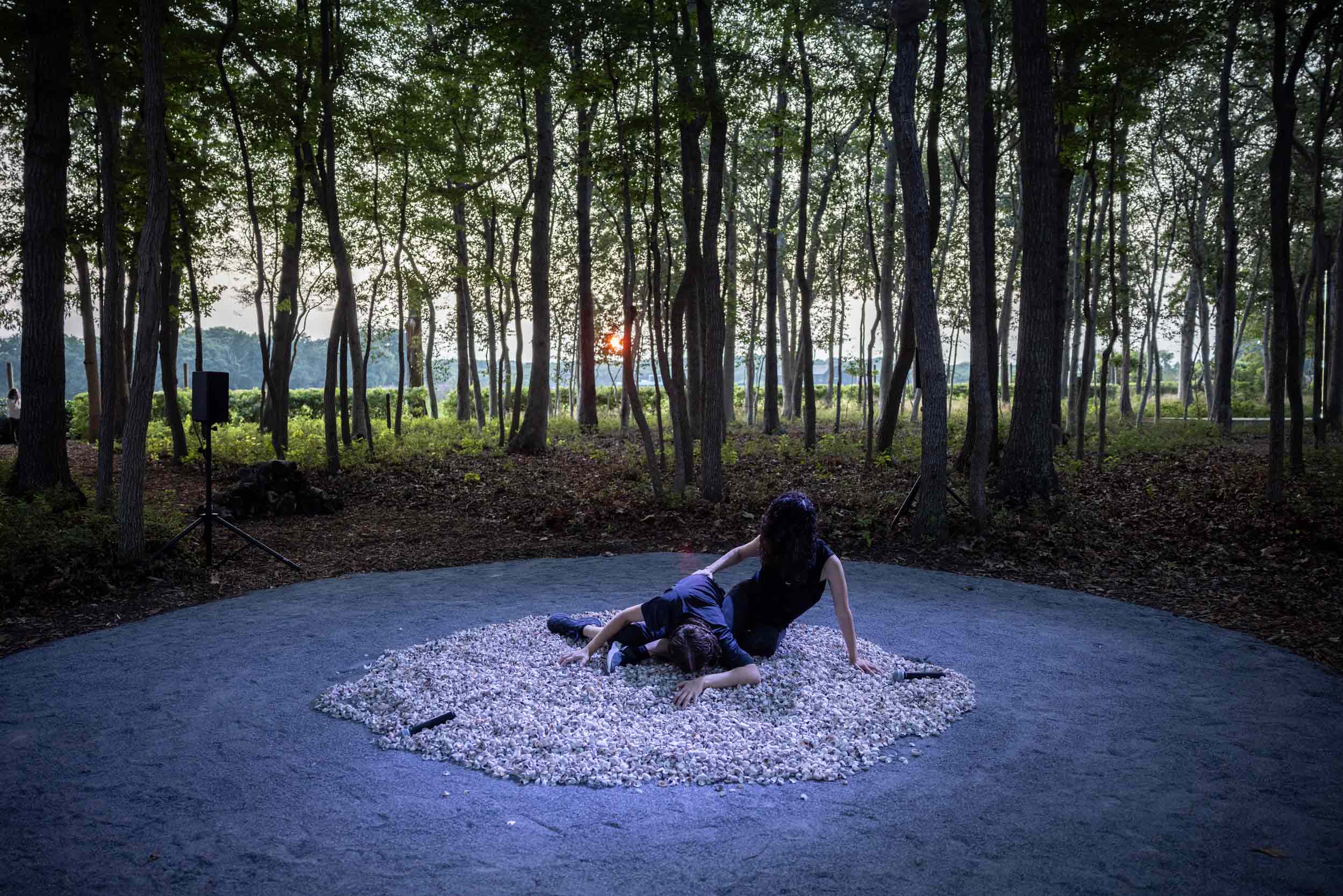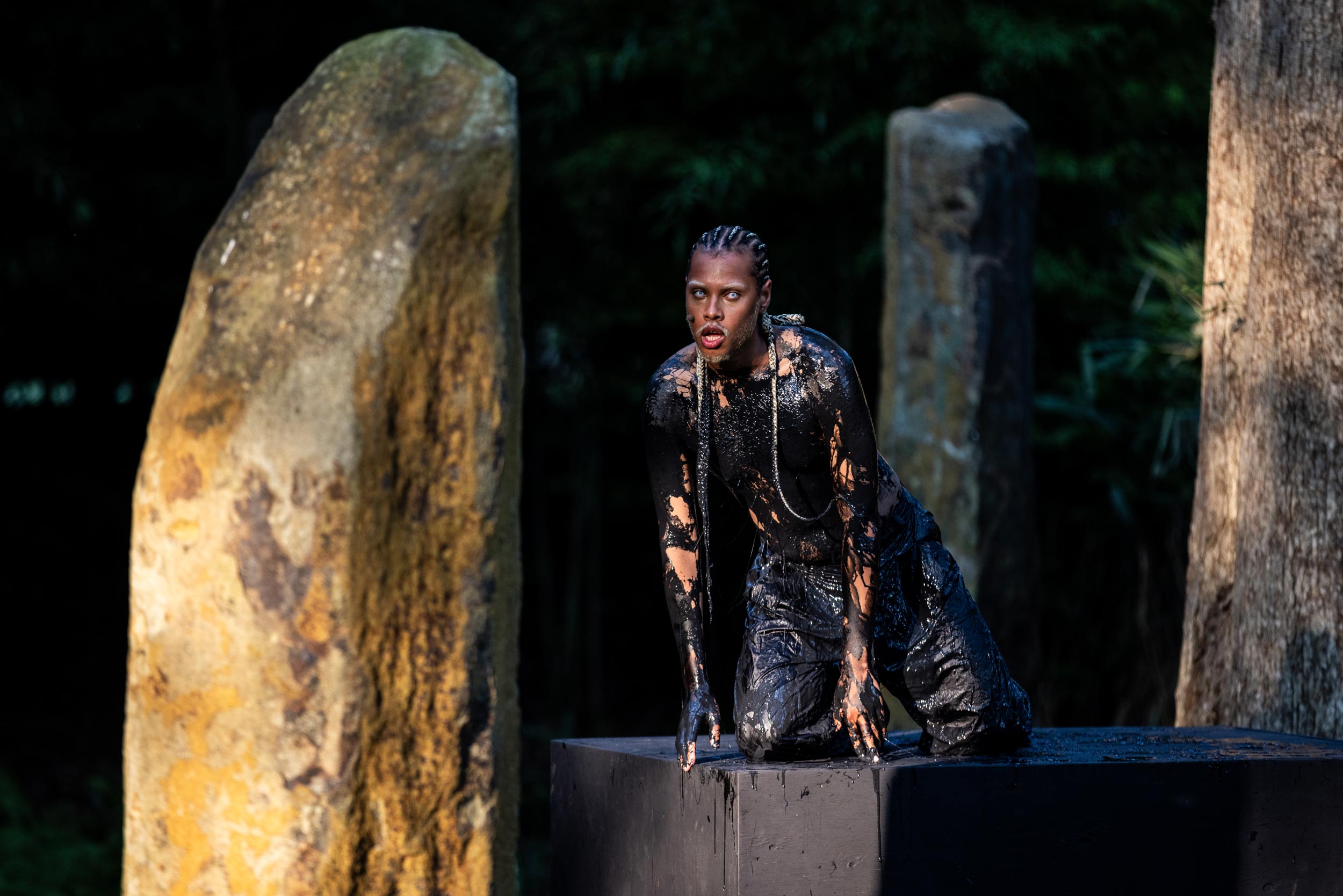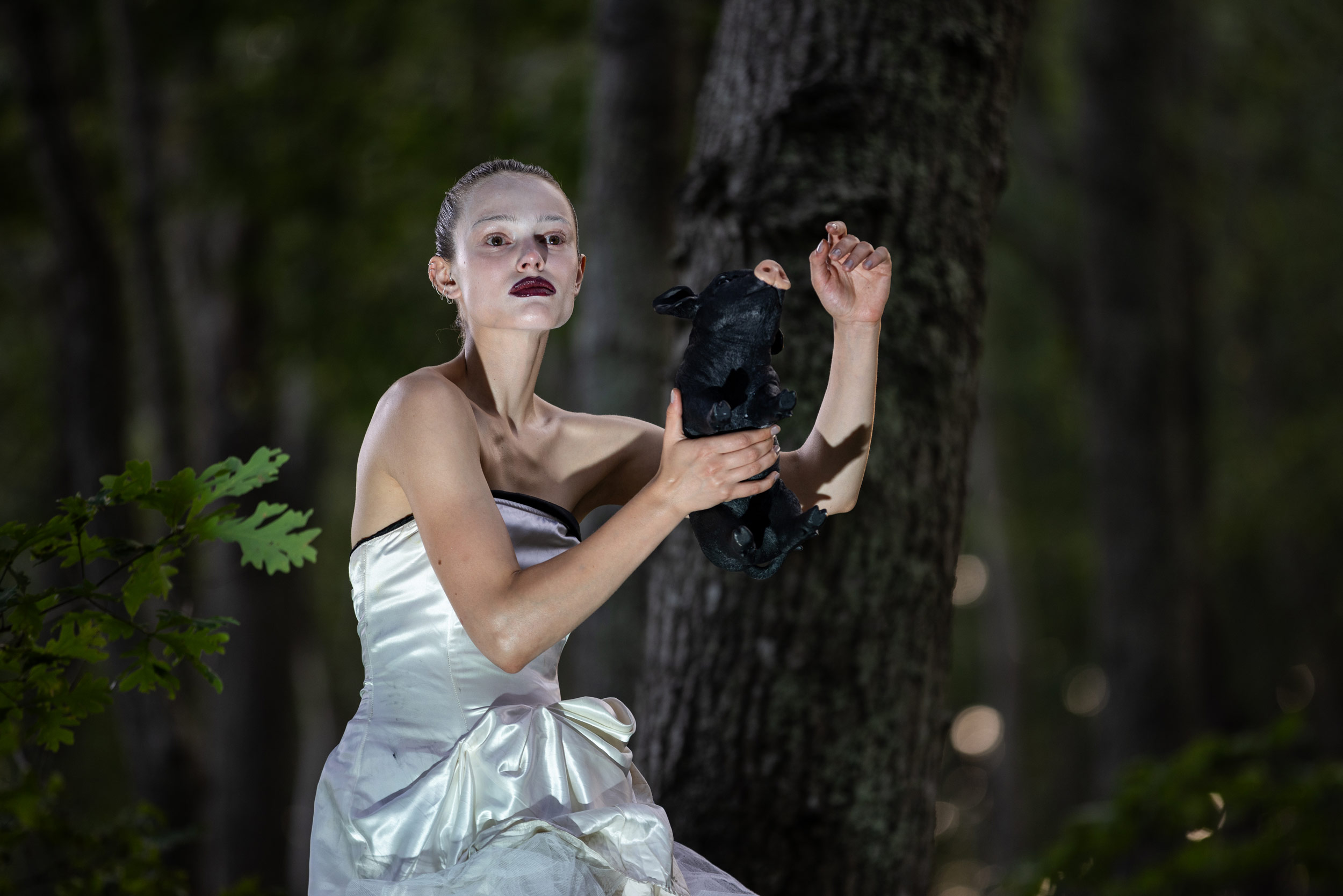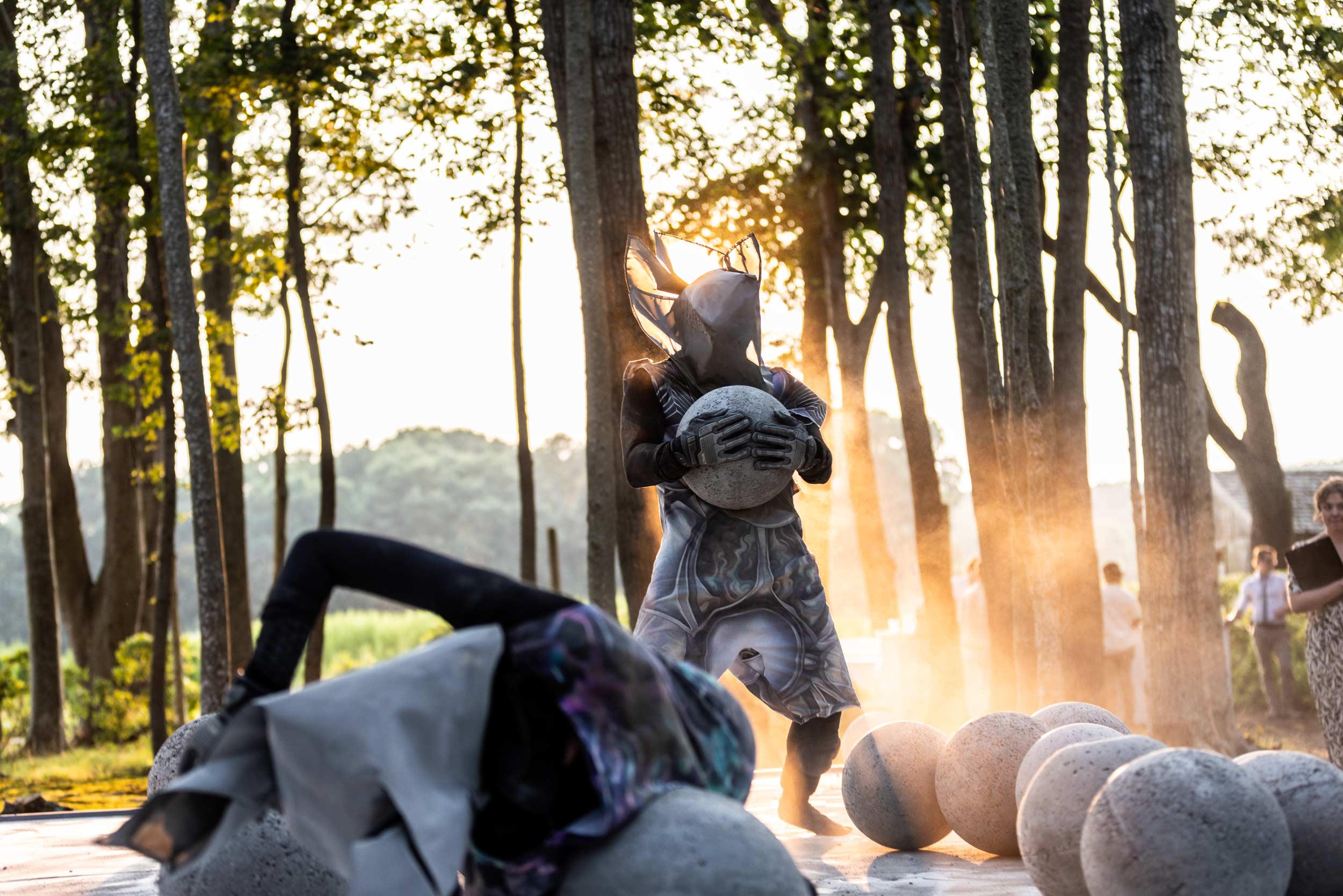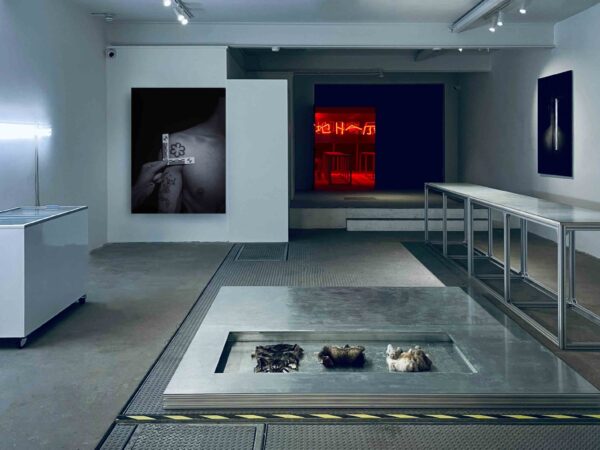The foundation’s centennial fundraising event hosted 20 provocative performances and installations and honored dance icon Lucinda Childs
On the evening of July 27, interdisciplinary laboratory for the arts and humanities The Watermill Center hosted its annual summer benefit. “I’ll tell you a little secret,” said artist and Watermill founder Robert Wilson into the microphone after taking the stage. “The reason I work, and the reason we work as artists, is to say, ‘What is it?’ And if you know what it is you’re doing, there’s no reason to do it!” The audience, having just bore witness to 20 fascinating performances and installations (complemented by a bottomless slew of top-shelf cocktails), burst into a fit of laughter and applause.
The showcase that covered The Watermill Center’s 10-acre lot was an embodiment of Wilson’s provocation: each immersive art piece was equal parts confounding and captivating, the installations begging audiences to ask themselves, “What is it?” For two hours, dozens of high-profile guests including Solange Knowles and architect Peter Marino meandered through this year’s various artistic sites and scenes. Titled A Laboratory: 100 Years of Experimentation, the benefit’s theme recognized the centennial anniversary of the center’s main building, an abandoned Western Union research facility which Wilson acquired in 1989 and converted to fulfill his vision for an incubator for emerging artists. The benefit also celebrated 1960s New York dance icon Lucinda Childs and Watermill’s new partnership with Dance Reflections, an initiative from Van Cleef & Arpels that aims to support the world of dance.
Upon arrival, a gravel trail led guests through a wooded maze, passing solo performance artists along the way. Among them was Robson Catalunha performing Anamnesis, who boogied to a house beat dressed as a pig-human hybrid while glaring at onlookers. Ten yards further stood a quaint structure that housed multimedia artist and performer Liz Magic Laser’s Exorcise 1 through 8, a carnival funhouse-esque setup whose eight digital mirrors played videos of yoga practitioners on a loop. An eerie choir of uniformly dressed singers wailed along the trail’s edges in Passage Piece by Dai Asano, their echoes reverberating throughout the woods as guests continued down the path. A clearing emerged; in its center was Memory Island, where two women writhed on a bed of seashells and whispered unintelligibly to the audience. To the left was a giant box with an image of digital artist Tez’s face stretched across it. Its eye holes offered guests a peep-show-like glimpse inside—there sat Tez himself, holding a molding of his head in one hand, and a Sprite can in the other.
The path gave way to Watermill’s main courtyard, where five of Childs’s notable dances spanning the ’60s and ’70s—Pastime, Carnation, Katema, Untitled Trio, and Radical Courses—were restaged by Childs’s niece Ruth Childs, her long-time collaborator Ty Boomershine, and members of Dance on Ensemble, an international company for dancers over 40. Overhead, a large clock and boulder swinging from a crane threateningly orbited around each other in Polish artist Alicja Kwade’s Die bewgte Leere des Moments. Meanwhile, with cocktails and bite-sized delicacies in hand, guests flocked in and out of Australian indie duo CocoRosie’s haunting new opera, Mort De La Mer, and visual arts fellow Gideon Appah’s new exhibition that cinematically blended themes of culture and identity in a series of surreal paintings.
Before Mykki Blanco and I.U.D. closed out the night with electrifying live musical performances, guests gathered for dinner. Over bites of frisée salad and sips of sauvignon blanc, Childs herself took to the stage after Wilson’s remarks. “I feel the earth move. I feel the tumbling down, the tumbling down…” she delicately recited from Einstein on the Beach, a 1976 opera directed by Wilson, which she choreographed. Delivering each line with hypnotic grace, Childs seemed to remind everyone that between the A-listers bedecked in designer clothes and blinding camera flashes, we had all gathered in celebration of Wilson’s prior sentiment—art that asks questions.


